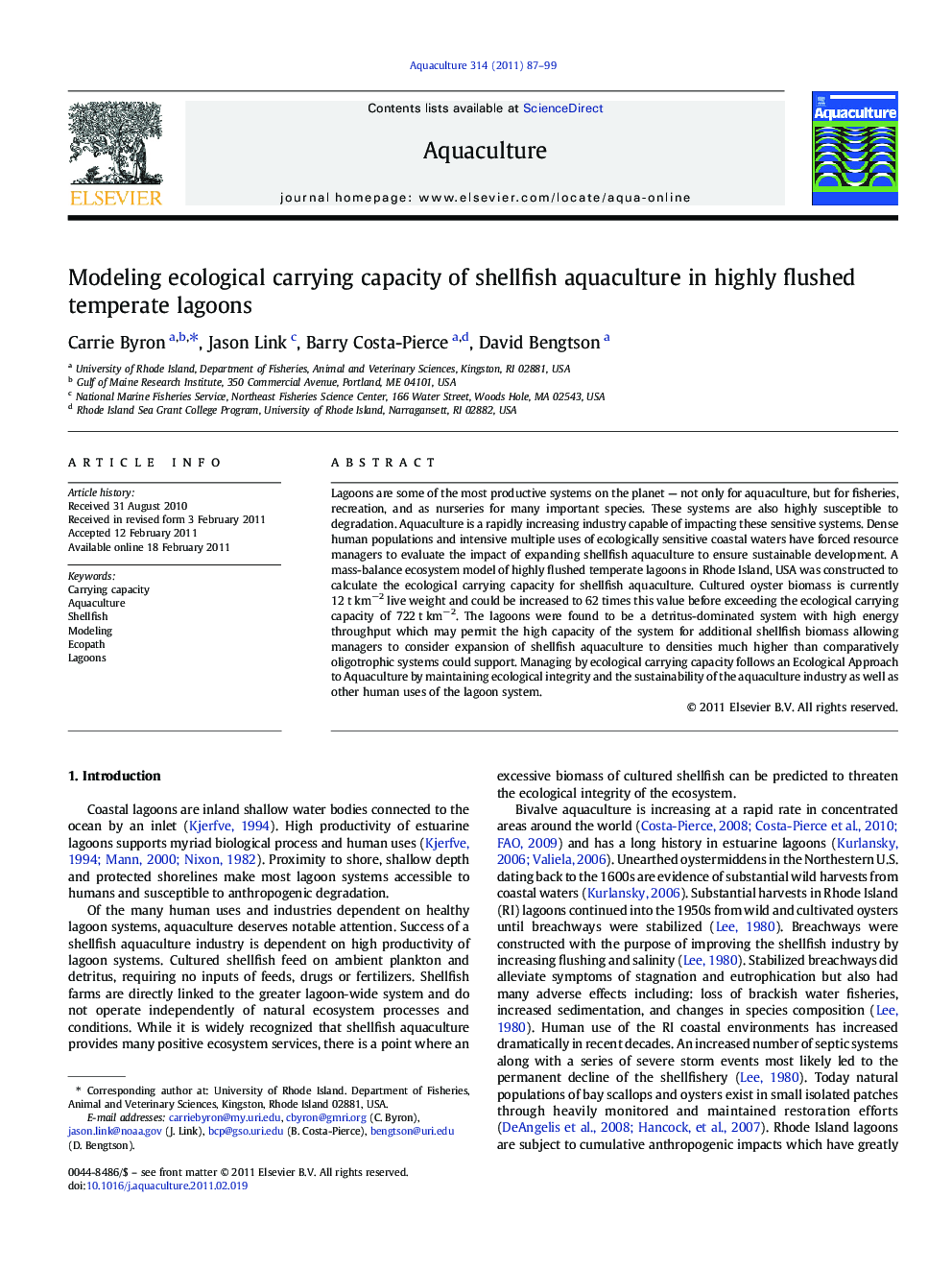| Article ID | Journal | Published Year | Pages | File Type |
|---|---|---|---|---|
| 2423107 | Aquaculture | 2011 | 13 Pages |
Lagoons are some of the most productive systems on the planet — not only for aquaculture, but for fisheries, recreation, and as nurseries for many important species. These systems are also highly susceptible to degradation. Aquaculture is a rapidly increasing industry capable of impacting these sensitive systems. Dense human populations and intensive multiple uses of ecologically sensitive coastal waters have forced resource managers to evaluate the impact of expanding shellfish aquaculture to ensure sustainable development. A mass-balance ecosystem model of highly flushed temperate lagoons in Rhode Island, USA was constructed to calculate the ecological carrying capacity for shellfish aquaculture. Cultured oyster biomass is currently 12 t km−2 live weight and could be increased to 62 times this value before exceeding the ecological carrying capacity of 722 t km−2. The lagoons were found to be a detritus-dominated system with high energy throughput which may permit the high capacity of the system for additional shellfish biomass allowing managers to consider expansion of shellfish aquaculture to densities much higher than comparatively oligotrophic systems could support. Managing by ecological carrying capacity follows an Ecological Approach to Aquaculture by maintaining ecological integrity and the sustainability of the aquaculture industry as well as other human uses of the lagoon system.
